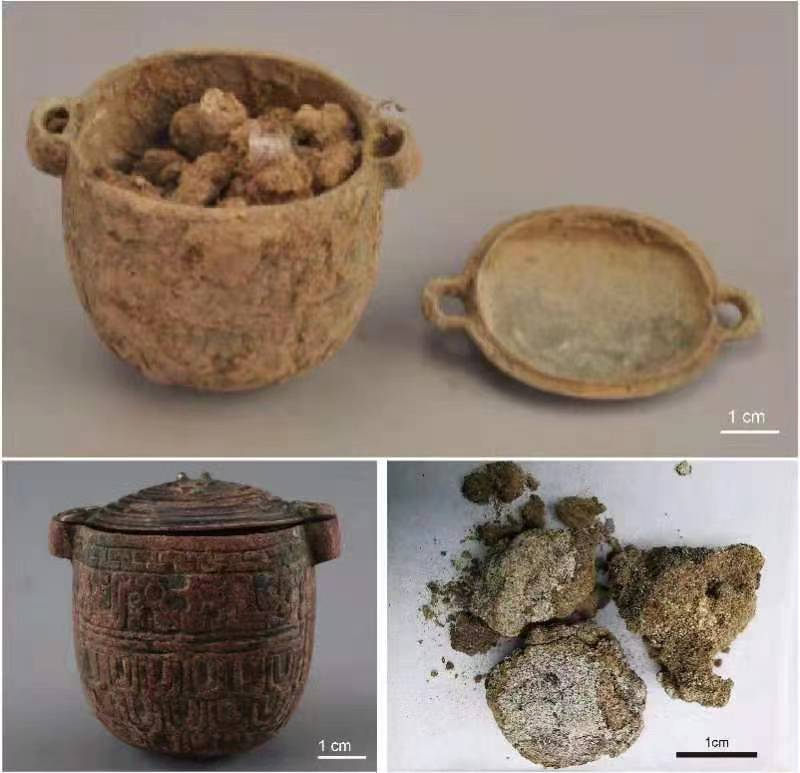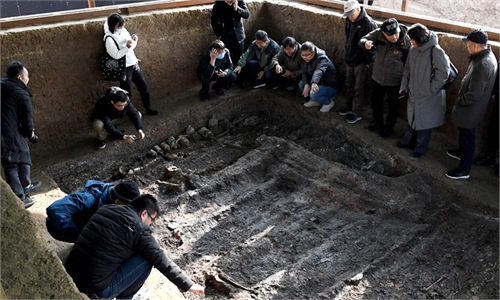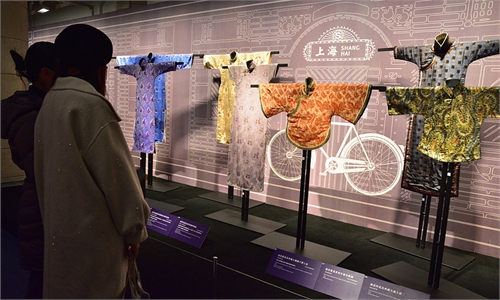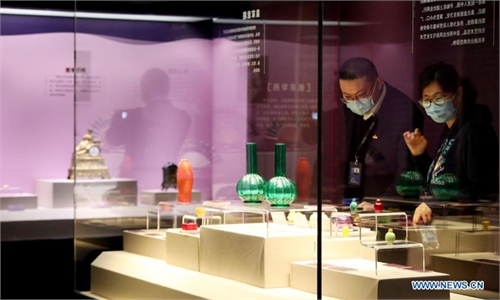
The discovered container with cosmetic residue. Photo: Courtesy of Yang Yimin
A finely made small bronze container that contains residue believed to belong to the Spring and Autumn period (770‐476 BC) has been unearthed in northwest China's Shaanxi Province. As the archeological analysis later progressed on the finding in recent days, the surprising fact about the residue has been revealed on Friday, showing that it was once a face cream product that belongs to ancient aristocratic males in China.
The sealed container was unearthed from tomb M49 within the Liujiawa Site, located in Chengcheng County, Shaanxi Province. There were around six grams of residue in the container that has been examined by archeologists of the University of Chinese Academy of Sciences. Those researchers identified the residue was made of ruminant adipose fat combined with monohydrocalcite from cave moonmilk substance that has been used for skin whitening.
"It is called 'moonmilk' in the geological context and the residue was made of the moonmilk substance mixing with ox's fat. The substance is white in color; the two together were used by ancient people for whitening their complexion," Yang Yimin, the head of a research team at the University of Chinese Academy of Sciences, told the Global Times on Tuesday.
"According to mainly the burial objects that were discovered in the tomb, we investigated the face cream should belong to male aristocracies at that time," Yang emphasized.
Yang's team is a group of dedicated archeologists who conduct multidisciplinary experiments such as ATP-FTIR, stable isotope analysis and GC‐C‐IRMS analysis to investigate the residue, which is believed to be China's earliest male cosmetics. Yang's team is also keen to use technological approaches in archeological investigations.
"The data that you observed using your eyes can sometimes be insufficient; we, therefore, use technological methods to make further explorations, such as analyzing the ingredients and chronological issues," said Yang.
Given the discovery of the bronze container in Shaanxi, there were several other similar cosmetic objects that have been unearthed in regions such as north China's Shanxi Province as well as in east China's Shandong Province. Those containers were not only used by ancient aristocrats as a symbol to show their status, but they also epitomize the thriving cosmetic industry during the Spring and Autumn period, suggested by the fact that those objects were found in different areas of the country.
"Such bronze containers have been discovered in around ten more places in China. They together, symbolize the industrialized nature of cosmetics back in the ancient time," said Yang.
The archeological project has recently been published in the academic journal Archaeometry, titled "The rise of the cosmetic industry in ancient China: insights from a 2,700‐year‐old face cream".



